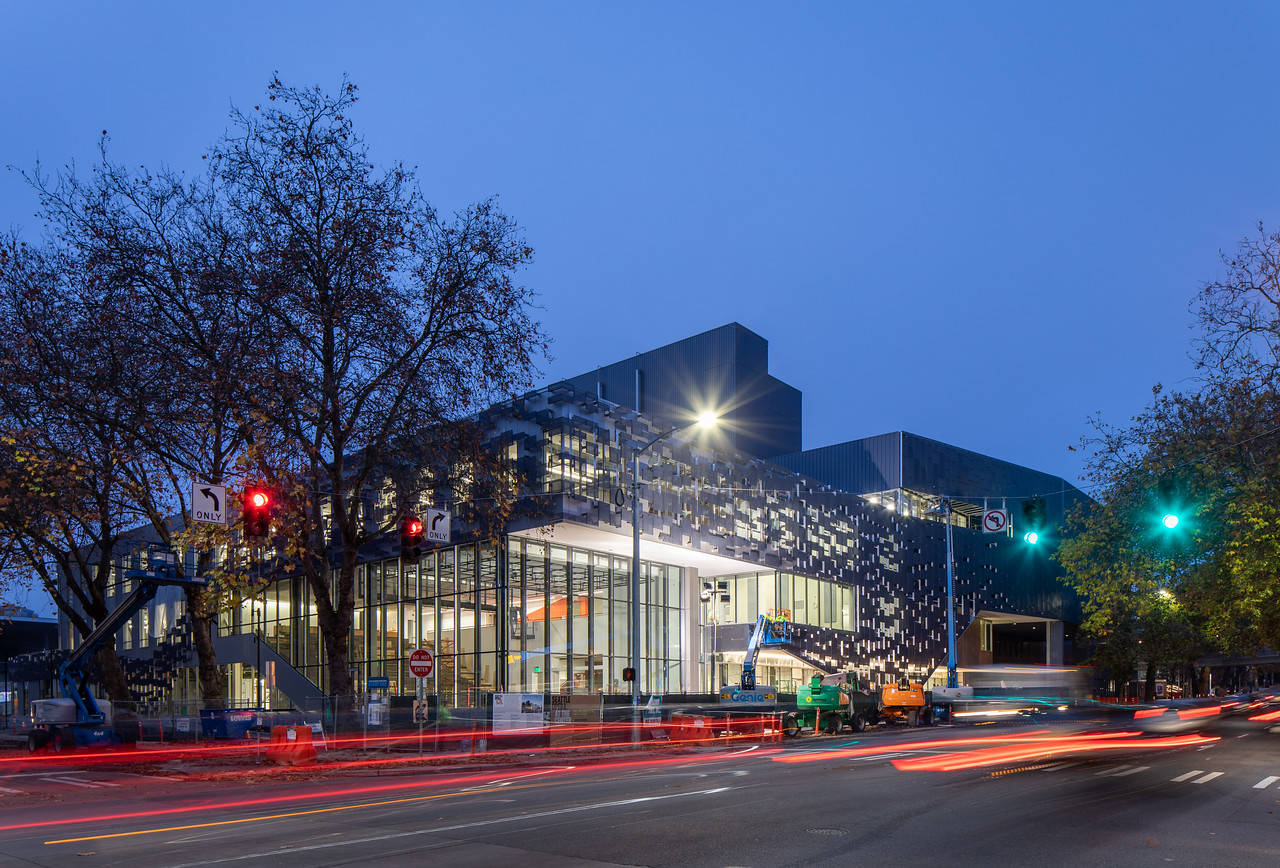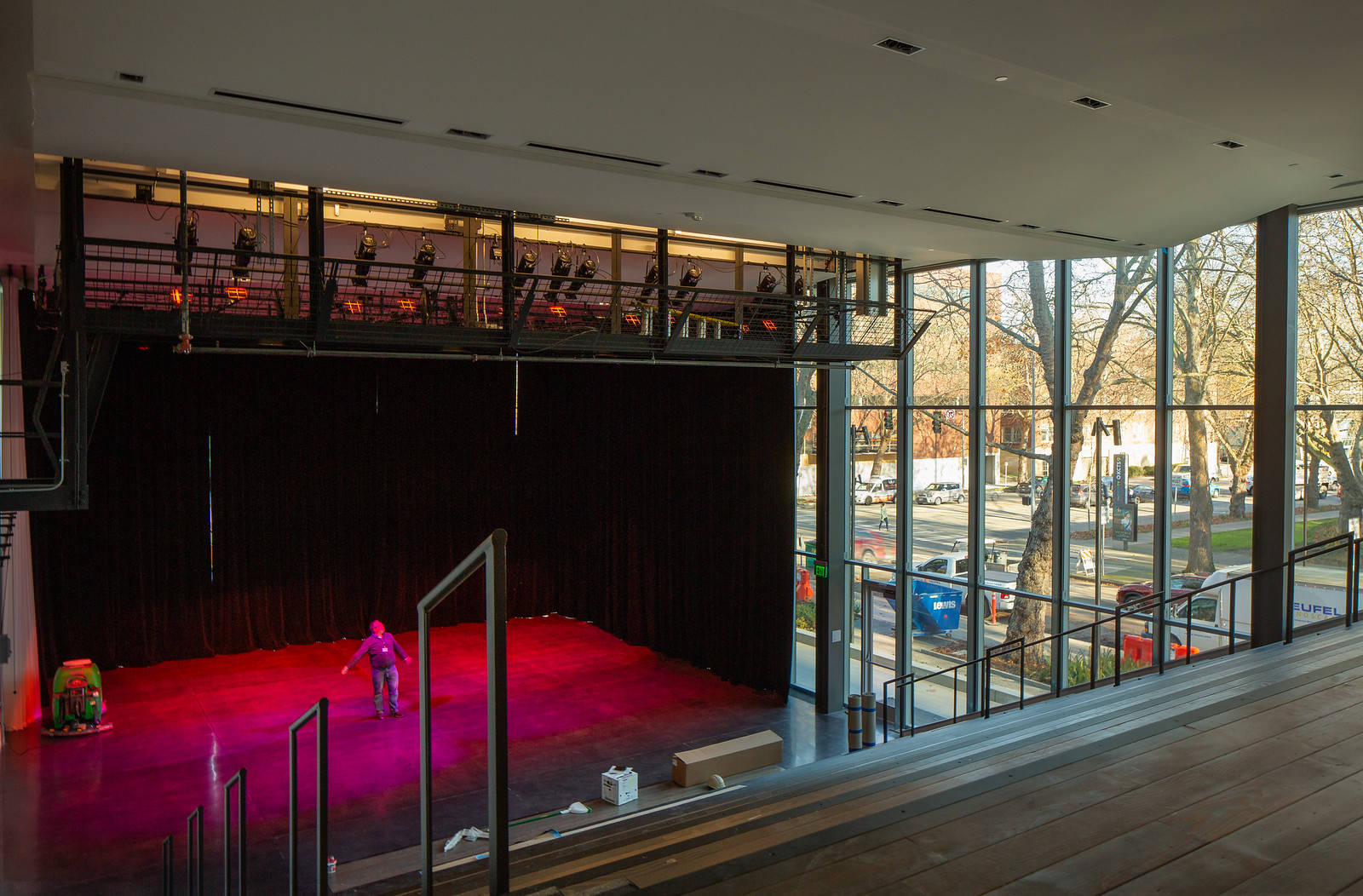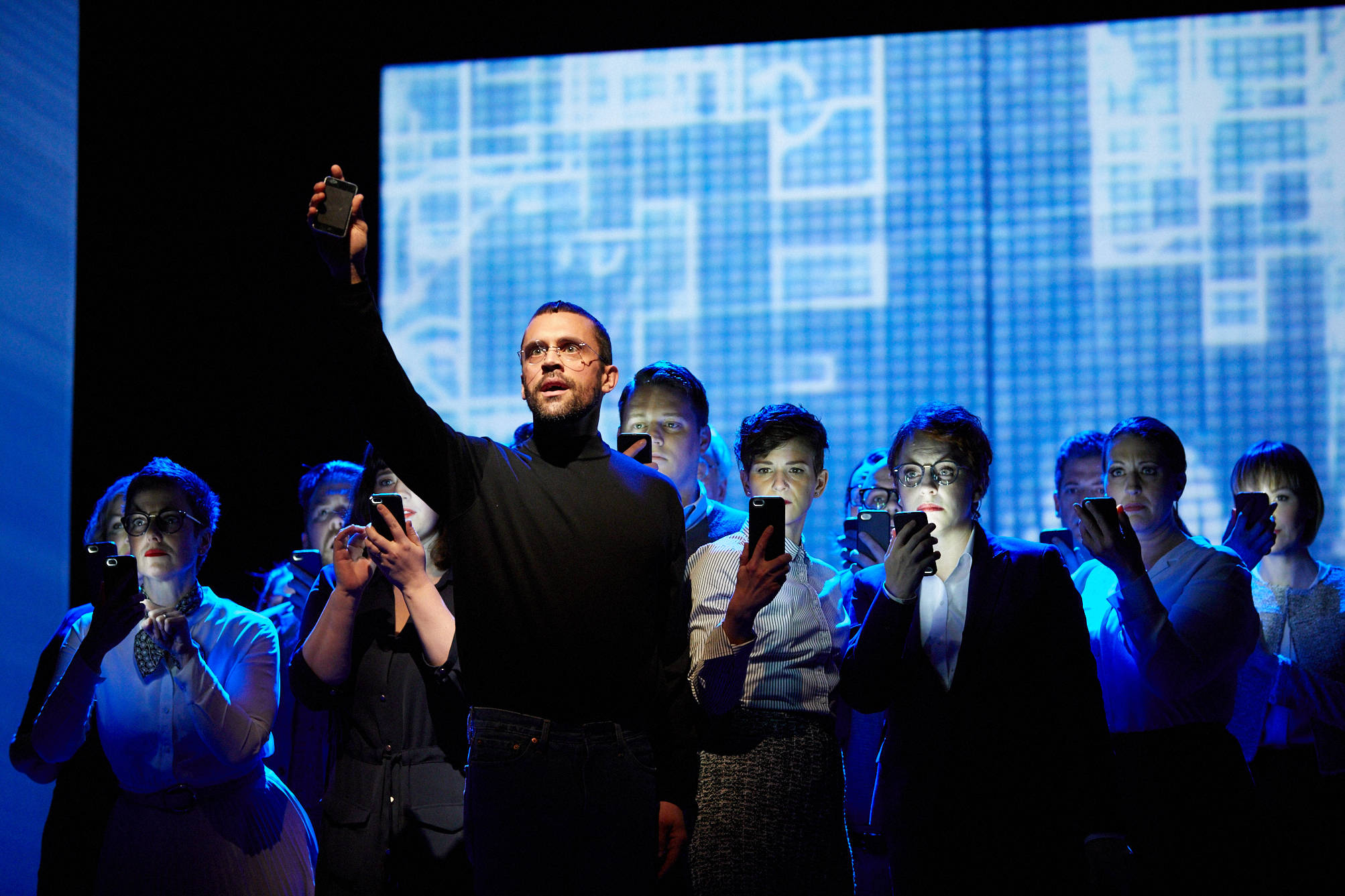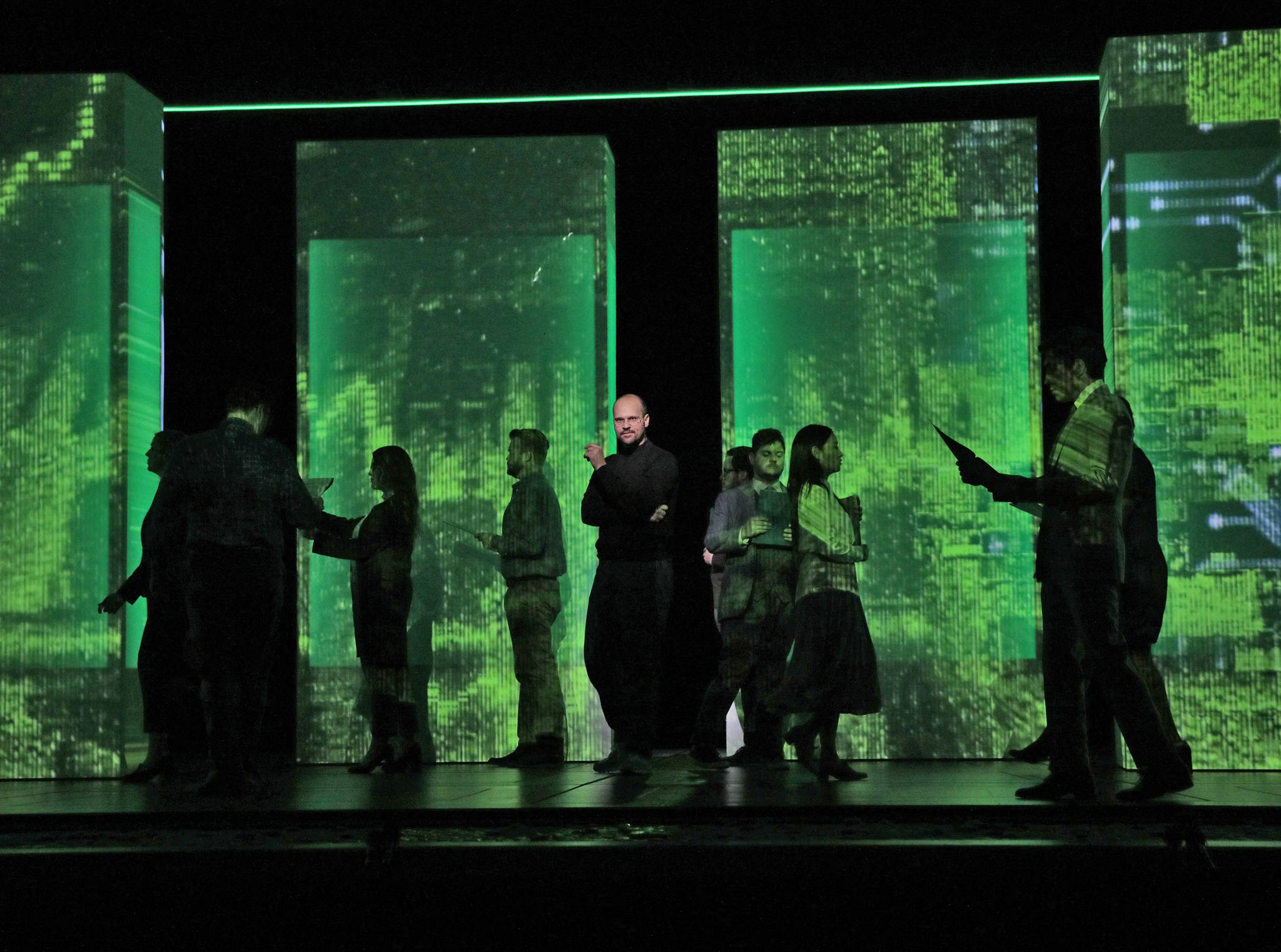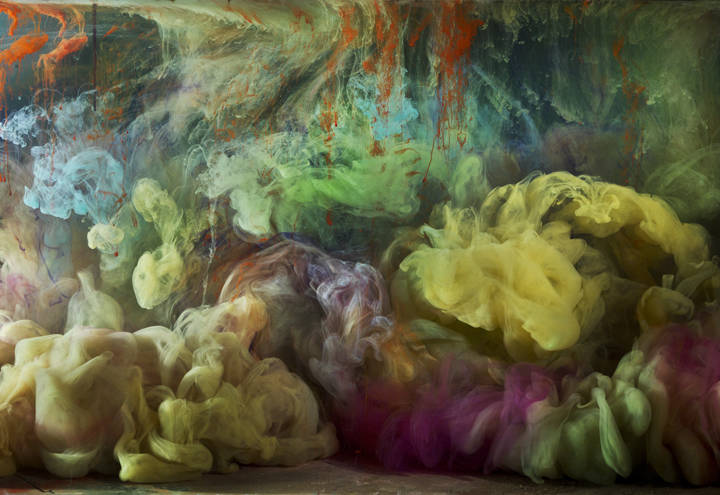When designing Seattle Opera’s new office and workspace, located in the northeast corner of Seattle Center, the architects of NBBJ apparently took inspiration from SO’s current space on John Street—specifically, what not to do. As Monday’s press preview tour revealed, in contrast to the company’s cramped and bunkerlike older building (once a carpet factory), they seem to have built the new $60 million Opera Center out of glass. Looking at it from Fourth Avenue and Mercer Street—as you can if you visit during the building’s open house on Saturday, Dec. 15 from 2 to 5 p.m. (which includes performances at 2, 3, and 4 p.m.)—it’s all windows. Some look into the spacious and bustling costume shop; others into the administrative offices on the top floor, which in the verdancy of summer will feel like a forest treehouse; and clear walls make up two sides of the new Tagney Jones Hall, a 318-capacity performance space in the Center’s front corner.
It’s this last which is the most exciting development—offering even more possibilities for smaller-scale performance, not only in this hall but in the Center’s three rehearsal rooms, facilitating SO’s very welcome attention in recent years to new chamber operas. SO’s June staging of Gluck’s O&E, in a somewhat grungy John Street rehearsal room, previewed what was possible—it made a virtue of necessity, giving the production a sort of DIY fringe-theater vibe that proved highly effective, contradicting the conventional wisdom of opera as strictly an opulent and expensive enterprise and removing this stereotype as a barrier for anyone who might feel put off by it.
With multiple possible venues for more contemporary works and more experimental productions, the Center further enables—in fact prioritizes—bringing opera fans both new and current right into the company’s nerve center. Tagney Jones Hall can be dressed up or down, so to speak: Those glass walls can be covered for stage productions (for which unregulatable natural light is not ideal), but, with gossamer curtains over them and seating placed on tiers of warm dark wood reaching the ceiling, there won’t be a tastier space in Seattle for recitals. On Monday, general director Aidan Lang told us that this space’s visual access to the outside is already working exactly as planned: An informal performance to test its acoustics drew in, within the first 10 minutes of music, curious sidewalk passersby peering in. At the same time, says director of marketing and communications Kristina Murti, SO isn’t ruling out continuing to stage shows in outside venues (as it did in 2016 with Laura Kaminsky’s affecting As One at the Central District’s Washington Hall) and taking advantage of the benefits of neighborhood outreach. A new opera, composer Ben Moore and librettist Kelley Rourke’s Odyssey, with its chamber orchestra and cast of 80 kids, will run March 1–3 at Cornish Playhouse only a few doors down Mercer Street, but it is already rehearsing in the new Center.
The Center’s allure for the public isn’t only about the crystalline transparency of the glass box or the innovative artistic possibilities promised within. The front facade is speckled with small panels of scrim, echoing the chain-link screens over the McCaw Hall main entrance onto which colored light can be projected. These mini-scrims too can be illuminated, creating a variable light show that, glowing and sparkling, will be the new face Seattle Opera presents to the city.
The Opera Center Open House
Saturday, December 15 from 2–5 p.m. | 363 Mercer Street (Seattle Center)
